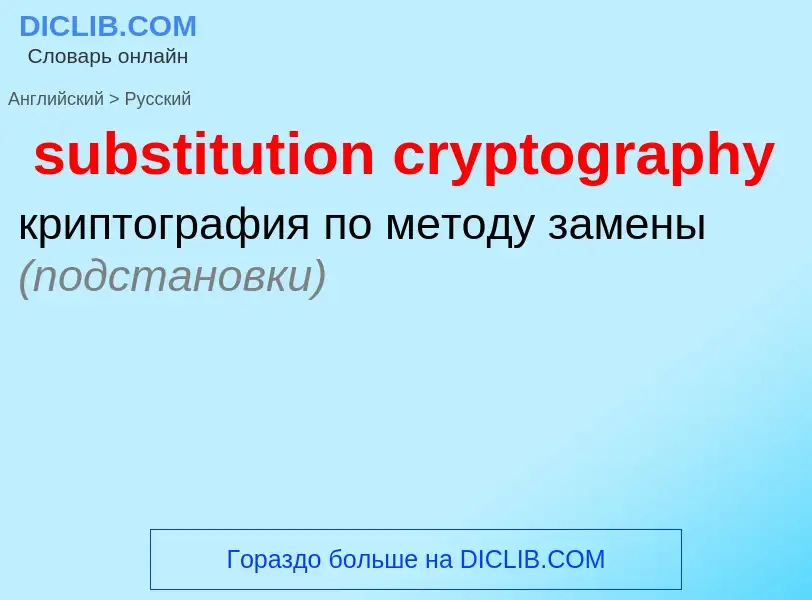Перевод и анализ слов искусственным интеллектом ChatGPT
На этой странице Вы можете получить подробный анализ слова или словосочетания, произведенный с помощью лучшей на сегодняшний день технологии искусственного интеллекта:
- как употребляется слово
- частота употребления
- используется оно чаще в устной или письменной речи
- варианты перевода слова
- примеры употребления (несколько фраз с переводом)
- этимология
substitution cryptography - перевод на русский
[sʌbsti'tju:ʃ(ə)nsaifə]
общая лексика
подстановочный шифр
Определение
Википедия
In cryptography, a substitution cipher is a method of encrypting in which units of plaintext are replaced with the ciphertext, in a defined manner, with the help of a key; the "units" may be single letters (the most common), pairs of letters, triplets of letters, mixtures of the above, and so forth. The receiver deciphers the text by performing the inverse substitution process to extract the original message.
Substitution ciphers can be compared with transposition ciphers. In a transposition cipher, the units of the plaintext are rearranged in a different and usually quite complex order, but the units themselves are left unchanged. By contrast, in a substitution cipher, the units of the plaintext are retained in the same sequence in the ciphertext, but the units themselves are altered.
There are a number of different types of substitution cipher. If the cipher operates on single letters, it is termed a simple substitution cipher; a cipher that operates on larger groups of letters is termed polygraphic. A monoalphabetic cipher uses fixed substitution over the entire message, whereas a polyalphabetic cipher uses a number of substitutions at different positions in the message, where a unit from the plaintext is mapped to one of several possibilities in the ciphertext and vice versa.
Drawbacks
The first ever published description of how to crack simple substitution ciphers was given by Al-Kindi in A Manuscript on Deciphering Cryptographic Messages written around 850 CE. The method he described is now known as frequency analysis.

![[[Enigma cipher]] machine as used by the German military in World War II [[Enigma cipher]] machine as used by the German military in World War II](https://commons.wikimedia.org/wiki/Special:FilePath/HGM Enigma.jpg?width=200)

